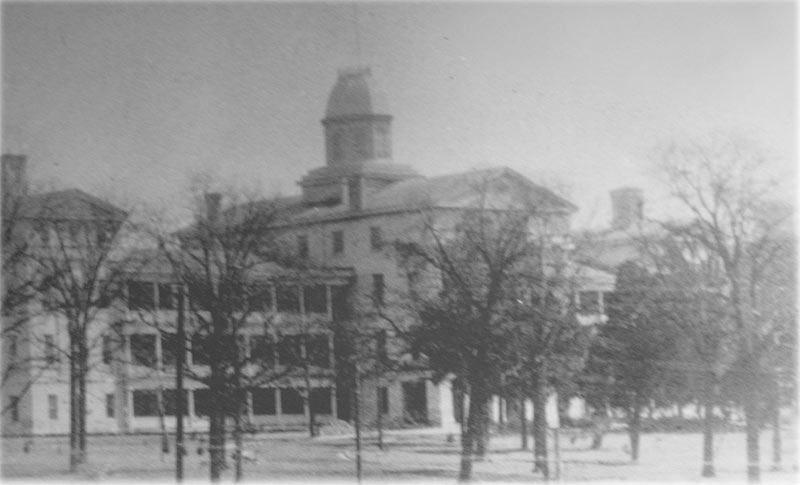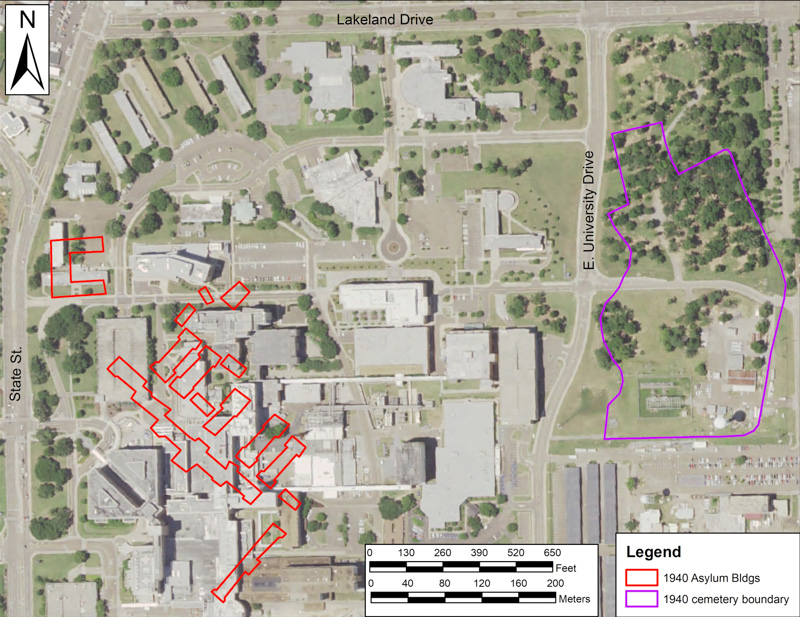The Asylum Hill Cemetery is the name given to a tract of land which is now part of the University of Mississippi Medical Center in Jackson, Mississippi. Between 1855 and 1935, it was the site of the Mississippi State Lunatic Asylum, which was renamed the State Hospital for the Insane in 1900. Recent archaeological studies undertaken by UMMC revealed the existence of as many as 7,000 graves located on the only remaining undeveloped part of the main campus.
 Further examination of historical records indicated that a cemetery had once existed at the location during the time when the asylum was in operation. Patients who died at the institution and who did not have family members to claim remains were buried there in pine coffins. After the asylum closed in 1935, the state-owned land lay untouched for two decades. The simple wooden markers which were thought to have marked each grave deteriorated over time and the existence of the cemetery was forgotten.
Further examination of historical records indicated that a cemetery had once existed at the location during the time when the asylum was in operation. Patients who died at the institution and who did not have family members to claim remains were buried there in pine coffins. After the asylum closed in 1935, the state-owned land lay untouched for two decades. The simple wooden markers which were thought to have marked each grave deteriorated over time and the existence of the cemetery was forgotten.
After the graves were discovered in 2012 during construction on campus, Dr. Ralph Didlake, UMMC professor of surgery, vice chancellor for academic affairs and director of the Center for Bioethics and the Medical Humanities, saw the need for a diverse group of scholars and community members to help oversee the possible exhumation, study, and respectful memorialization of those buried on the UMMC campus. He formed the Asylum Hill Research Consortium at that time so scholars and other community partners could contribute to the project.

